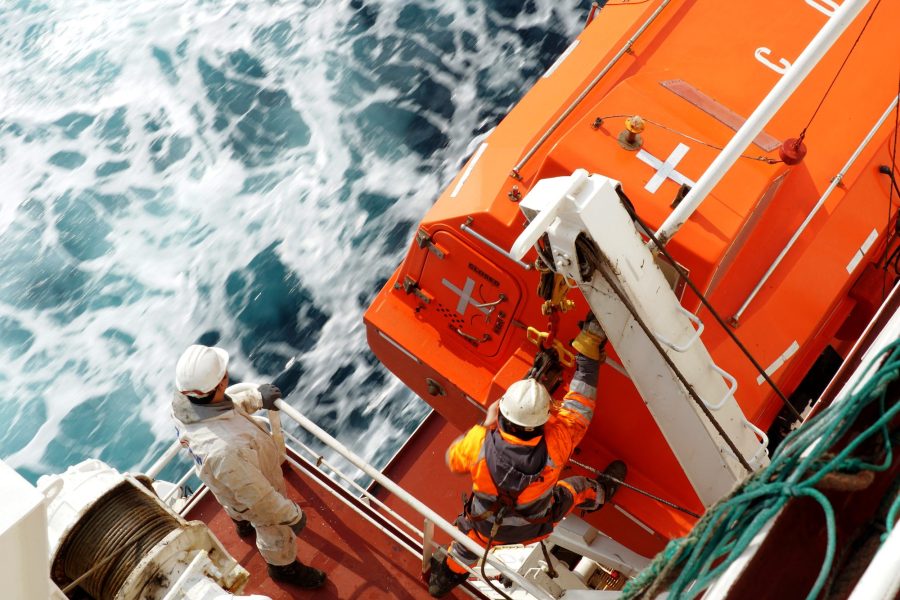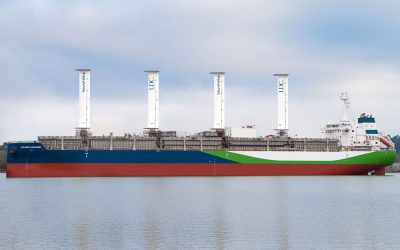Failure to eradicate injuries and fatalities from lifeboat launches is prompting demand for a drastic rethink, writes The Naval Architect‘s editor Daniel Johnson
The potential dangers of lifeboat drills are in the news once again, following an intervention last month from the Container Ship Safety Forum (CSSF) calling for “a reinvention” of lifeboats onboard cargo vessels. According to the industry association, which was set up in 2018 with the aim of improving safety performance in the container shipping industry, far too many seafarers are getting injured – some of them fatally – while launching the lifeboat during evacuations or evacuation drills. Not because the lifeboats haven’t been compliant with safety standards, but simply because the launch of a lifeboat is such a dangerous task to perform.
“For way too long,” noted CSSF chairman Aslak Ross, “we have seen able seafarers being injured when launching lifeboats even though crews have been trained and the lifeboat is modern and fully compliant.”
Ross highlighted the 2017 publication ‘Lifeboat drills: we need to save lives, not lose them’ from the UK Chamber of Shipping as recognition of the problem. The article identifies 60 fatalities during testing of lifeboats over a 10-year period and suggests that the use of simulation training could improve safety.
Examine the available statistics on lifeboat related accidents further, and a pattern fashioned from an ongoing waste of seafarer’s lives begins to emerge. A study published in 2014 by the UK Marine Accident Investigation Branch (MAIB) – using data accumulated from both UK flag ships and non-UK flag ships where MAIB conducted investigations on behalf of non-UK flag states – shows that 16% of all seafarers killed were as a result of lifeboats and their launching systems and notes that an even greater number survived lifeboat incidents but with severe injuries of the spine and lower extremities, and that there were numerous “near misses”. MAIB’s findings indicate that seafarers are exposed to the greatest risk of injury during the maintenance, launching and recovery operations of lifeboats.
More recently, InterManager raised awareness of the issue last year by releasing previously unseen insights surrounding lifeboat related accidents. An active member of the International Lifeboat Group and a non-governmental organisation at the IMO, the international trade association for ship and crew managers began gathering statistics globally several years ago and now has the largest maritime database of lifeboat accidents.
According to its figures, since 1981 there have been 420 deaths involving lifeboats, 346 serious injuries and 116 minor injuries. Other findings show that human beings were not the primary cause of lifeboat accidents and that a significant number of accidents were due to issues relating to equipment, with the most common mechanism issues being the release mechanism, davit, and wire/rope.
Clearly, the industry has made momentous advancements in developing lifesaving equipment since the lifeboat debate opened in the aftermath of the Titanic disaster, but it’s also obvious that the measures taken so far have not had sufficient effect, with lives still needlessly being put at risk.
As Ross observed: “Everyone knows we have a problem; seafarers are scared to launch lifeboats.”
He added that to date no one has offered a plausible path towards a solution to the problem for cargo vessels and that a change is needed to provide a safe environment for seafarers and to regain trust in lifesaving equipment.
CSSF believes that there is too much attention on compliance and training and not enough focus on the root cause of the problem, which is that the design of equipment is too complicated and in the case of container ships lags behind other segments of shipping which have focused on improving systems.
“Simulation and use of new technology is one way to conduct drills in a safer environment, and we support the intent to reduce the risk of accidents,” said Ross. “However, it does not solve the core of the problem: launching a lifeboat is too dangerous. And even though simulation has its advantages, it should only be used as a supplement to well-conducted onboard abandon ship drills where crews are familiarised with ship specific equipment.”
The association points to alternative designs that are already available for offshore installations and for passenger evacuation on passenger vessels through marine evacuation systems and the like and says that such systems should also be made available to cargo vessels without delay.
It is hoped that CSSF’s intervention will provide the industry, including naval architects, with fresh impetuous to challenge the current change-resistant environment and innovate to eliminate the risk of lifeboat accidents. With seafarers continuing to lose their lives, one would suggest that it’s something that is long overdue






